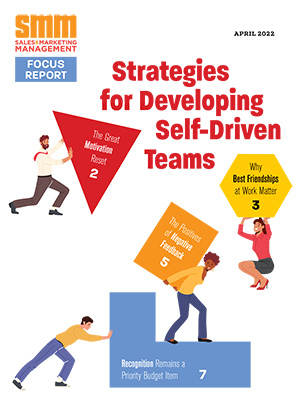It happens all the time: Your customer wants it yesterday, he wants it perfect, and he wants to pay next to nothing for it.
Relax…he’s supposed to make demands. After all, he’s your customer. He wants exceptional quality, fast service, and low price, and it’s your job to see that he gets all three.
Or is it? Do that for very long, and you’ll find yourself out of business.
Here’s an old saying I just made up: “Quality, service, or price—pick any two out of three.” Think of it as a big equation: Q+S=P.
If your quality is high and your service is excellent, your price must be high, too (as this is an unfavorable thing, we’ll represent it in this example as a small p): Q+S=p.
If your quality is high, but your service is slow, your price should be lower: Q+s=P.
And if you sell lesser-quality goods, no matter how good your service, your price must reflect the quality of the merchandise: q+S=P.
For example, Chef Pierre’s Cafe Francais features escargot and filet mignon and impeccable service. But Chef Pierre may cost you your credit limit.
McDonald’s, on the other hand, offers quick service and a low price. But their food can’t compare with Chef Pierre’s. If Chef Pierre tried to offer great quality, impeccable service, and match McDonald’s prices, he’d soon be out of business.
Chef Pierre doesn’t advertise low prices. Nor does McDonald’s pretend to have the best food in town. Neither tries to be something they aren’t in the minds of their customers. Yet both do very well simply by being the best at their two out of three.
Don’t get me wrong: Sometimes you have to offer all three to keep a long-standing customer happy. If your best customer suddenly has an emergency and needs your best product at a low-ball price and he needs it immediately, you can’t take the chance of losing him to a competitor. So you give him all three, even if it means you lose money on the transaction.
But if you must offer all three—quality, service, and price—you had better have confidence you can make up for any loss on that customer’s next orders.
By being flexible, some companies are able to create the impression their customers receive all three. They can adapt their pricing, or service, or even the quality of their product according to their customers’ needs. In effect, they simple choose the two which best suit the situation.
A client of mine in the printing business uses this method effectively. His firm offers all three, but only two at a time. “If the customer wants a new brochure fast and perfect,” says Dale Wilson, president of Wilson Printing, “We may charge extra for the rush service. Likewise, if he wants perfect quality but can afford to wait for awhile, I can beat anybody’s price.”
Wilson adds he seldom offers the other two (low price and fast service) together. “Quality will suffer, and we’re not willing to compromise on that,” he explains. “It puts our company’s reputation in jeopardy.”
Any firm that offers only one of the three will soon be found out by customers. They probably won’t be customers for very long. A low price will not make up for poor quality and lousy service. Nor can the best product be sold at a high price if the service is too slow.
Likewise, there are dangers in trying to provide all three. Trying to be too much to too many can stretch your firm’s abilities.
Another acquaintance who repaired boat engines offered the same quality parts as his competitors, matching his competitor’s prices dollar for dollar.
But he also provided far superior service, painting the inside of the motor housings, degreasing all the parts before assembly, and generally tidying up his customers’ engines for aesthetic reasons as well as peak performance.
Unfortunately, all this additional labor took up time, for which he had to pay his employees. His costs were higher; his quality was the same as his competition. And his prices were the same or lower.
His customers loved him, and he lost money on every one. Last season was his last season in business.
When you choose your two, be sure your customers know which two. If you choose quality and service, tell them that, while you can’t always guarantee the lowest price, you sell only the best merchandise and will bend over backward to serve their needs.
So long as you fulfill your promise of quality and service, your customers can appreciate your need to charge a little more.
Likewise, if a customer knows he’s getting the lowest price in town on a top-of-the-line washer and dryer, he won’t be so disappointed when he can’t find a salesperson immediately.
Quality, service, or price. Pick any two out of three. Then communicate that image to your customers and prospects.
Robert Grede is an author, teacher, counselor, and public speaker.
Marketing Lowdown: Quality, Service, or Price—Pick Any Two Out of Three
Get our newsletter and digital focus reports

Stay current on learning and development trends, best practices, research, new products and technologies, case studies and much more.

